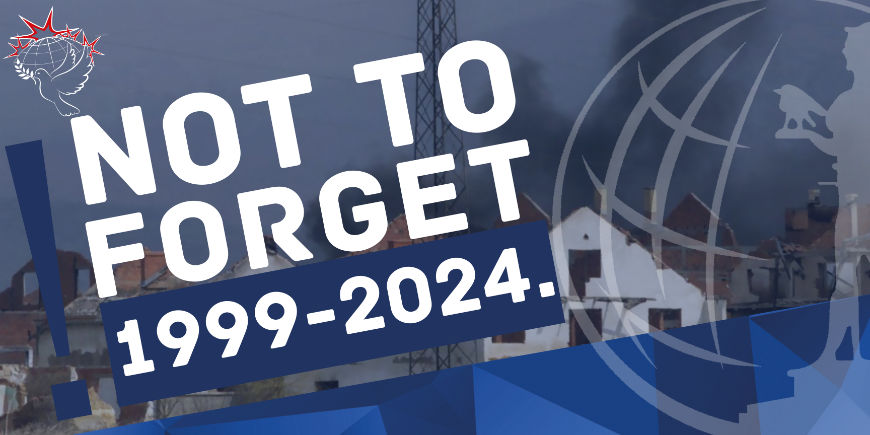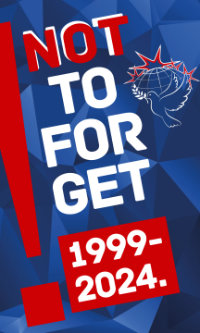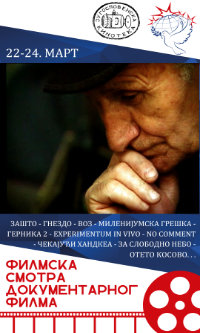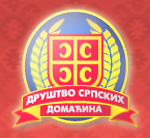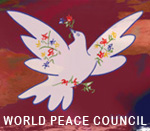Yugolsavia my third country by Jan Oberg
| Activities - NATO Aggression |
And now back to Europe and another love story – Yugoslavia. It begins in 1974 in Dubrovnik at the Adriatic coast in what is now Croatia. That’s where there was a multi-national Inter-University Centre, IUC. Professors from all republics came there to teach philosophy, literature, politics, international affairs, etc – and their students came from around the world. Not so strange because about 120 universities around the world delivered the non-Yugoslav students and teachers free of charge to the IUC. So it was an international meeting place like no other between East and West – and Yugoslavia was a neutral, non-aligned country with amazing relations with both the East and West and the so-called Third World.
One of the teachers at IUC was Håkan Wiberg (1942-2010) who was also one of my sociology professors at Lund University. He had stimulated my interest in peace and conflict research because he gave a short introductory course to it. He was also the head of the Lund University Peace Research Institute – or Department – LUPRI (closed down in 1989). He must have sensed my interest because one day he said, Come along with me to Dubrovnik, I think it will be an eye-opener for you!
And so I did. And so it was.
At the time, the director of IUC was Johan Galtung, whom I had met when he gave a lecture at my high school in Aarhus in 1968. So, here I was with two pioneering eminent and very different peace scholars who became my main mentors in the field of peace and conflict research. The first years I was a student, took all the courses I could and wrote one paper after the other; we called it high-temperature education. Apart from some sleep, a sista with lunch – often oysters and white wine at some beautiful square in the old town – and a swim in the sea, it was work, work and more work until late dinner and then up early the next morning. In particular, Galtung was a super-productive creativity-driven master who inspired young people East, West, North and South… in the end, however, too much for the Yugoslav authorities.
As you’ll see here and there through this book, they are guilty of much when it comes to my intellectual career and production.
Later, I became a teacher at ICU and enjoyed it tremendously – also because it gave me the opportunity to learn from some of Yugoslavia’s best intellectuals – including the Praxis philosophers, people like Mihailo Markovic and Svetozar Stojanovic.
 My shot from the Tito Museum in Belgrade. No wonder he looks troubled…
My shot from the Tito Museum in Belgrade. No wonder he looks troubled…
Interestingly, Josip Broz Tito – the “dictator” as ignorant people in the West called him after his death in 1980 – had an interesting way of treating thinking dissidents; he took their passport from them and, so, the only place they could interact with scholars from abroad was in – yes, Dubrovnik. That was great for me because I learned one thing in 1974 that I could not have operated without later: Yugoslavia was hellishly complex; don’t believe that you understand it because you have read a book or two. Always look for various explanations, be aware that everything is related to everything else in the Yugoslav space and – finally – don’t believe that the Balkans is a kind of backyard of primitive thinking and atavistic conflicts.
Concretely – there I sat as a 23-year-old student and listened into the wee hours of the night to the – heated – discussions among the best intellectuals from all Yugoslavia’s republics discussing the most important thing that year and indeed signalling the fate of the country – the new Constitution that had been adopted in February 1974, a 300+ page document that allegedly made it the second-longest constitution in the world after that of India.
From 1974, Yugoslavia became the third country that I felt I belonged to. I have visited it more than a hundred times, almost every corner of it. With my TFF team members, I was very intensely and closely involved in all the processes of its violent dissolution through the 1990s and I have conducted about 3000 interviews in all republics, at all levels and with people of all walks of life – in addition to internationals, UN people, humanitarian workers, journalist and, on one occasion, CIA.
I have served as goodwill (unpaid) mediator between three governments in Belgrade and the Kosovo-Albanian leadership under then-President Dr Ibrahim Rugova. TFF’s team produced a comprehensive plan for a 3-year negotiated solution which was the only one that got widely published in leading media on both sides.
It was all destroyed by those who wanted a violent solution, the US, CIA, the German intelligence service and the murky Kosovo-Albanian forces that got all the weapons. They undermined Dr Rugova’s nonviolent policies and later became the Kosovo-Albanian Liberation Army, or KLA/UCK, NATO’s allies on the ground. Two of their leader still play prominent roles in the new states’ political system, Hashim Thaci and Ramush Haradinaj.
And that was basically what the 72-days NATO bombing of Kosovo and Serbia from March 24, 1999, was all about. The Clinton administration’s illegal (according to intrnational because it lacked a UN Security Council mandate) Serbophobic project produced nothing but destruction, fear, higher cancer rates due to the criminal use of depleted uranium bombs, 800 000 refugees who ran down to Macedonia, etc.
I was there during the bombing, visited Novi Sad and Belgrade. Remember standing in my room on the 6th floor of Hotel Moskva in the centre of Belgrade and feel the pressure wave up through my body when NATO relently punded the Batajnica air base, built to withstand tactical nukes, 10 kilometres away. No one who was not there would ever understand what crime it was. And the result? The US Bondsteel Base, the largest at the time outside the US, being built in Kosovo for strategic reasons, an even today failed stated called Kosova and a Serbia that has long ago lost faith in joining the West. Why?
I’ll tell you. Law professor, Vojislav Kostunica, who became President after Slobodan Milosevic told me during a conversation I had with him in his home in the cozy Skadarlija Street that Washington had already told him – a couple of months after NATO’s bombing – that Serbia would only be allowed to join the EU after it had joined NATO.
This deep engagement – with TFF’s several Associates and Wiberg and Galtung in particular – has produced what I believe to be the largest single analytical work, equivalent to about 2500 A4 pages, namely the blog called “Yugoslavia – What Should Have Been Done” (2014) in which everything we wrote from the wars broke out there in 1991 is published as it was originally written. It’s also unique in its systematic focus on not only criticism – of which we do a lot – but on how the world could have helped the peoples of Yugoslavia to divorce in a better way and live better together afterwards. Had the West not bee so ignorant and arrogant and mainly produced peace-prevention policies.
I remain of the belief that that conflict and the ways it was mishandled has changed Europe and certain matters beyond Europe more than the fall of the Berlin Wall and the demise of the Soviet Union.
In summary, much more to be said in due course.
| < Prev | Next > |
|---|
| Overstatement from Davos 2017. |
Liberal corporative capitalism, for reasons of lowering traveling costs, proposed not to travel to history alone but packed togather with NATO, EU and unipollar World Order. Workers participation has good chances to step in provisionally, buying time for full scale workers selfmanagment. |
